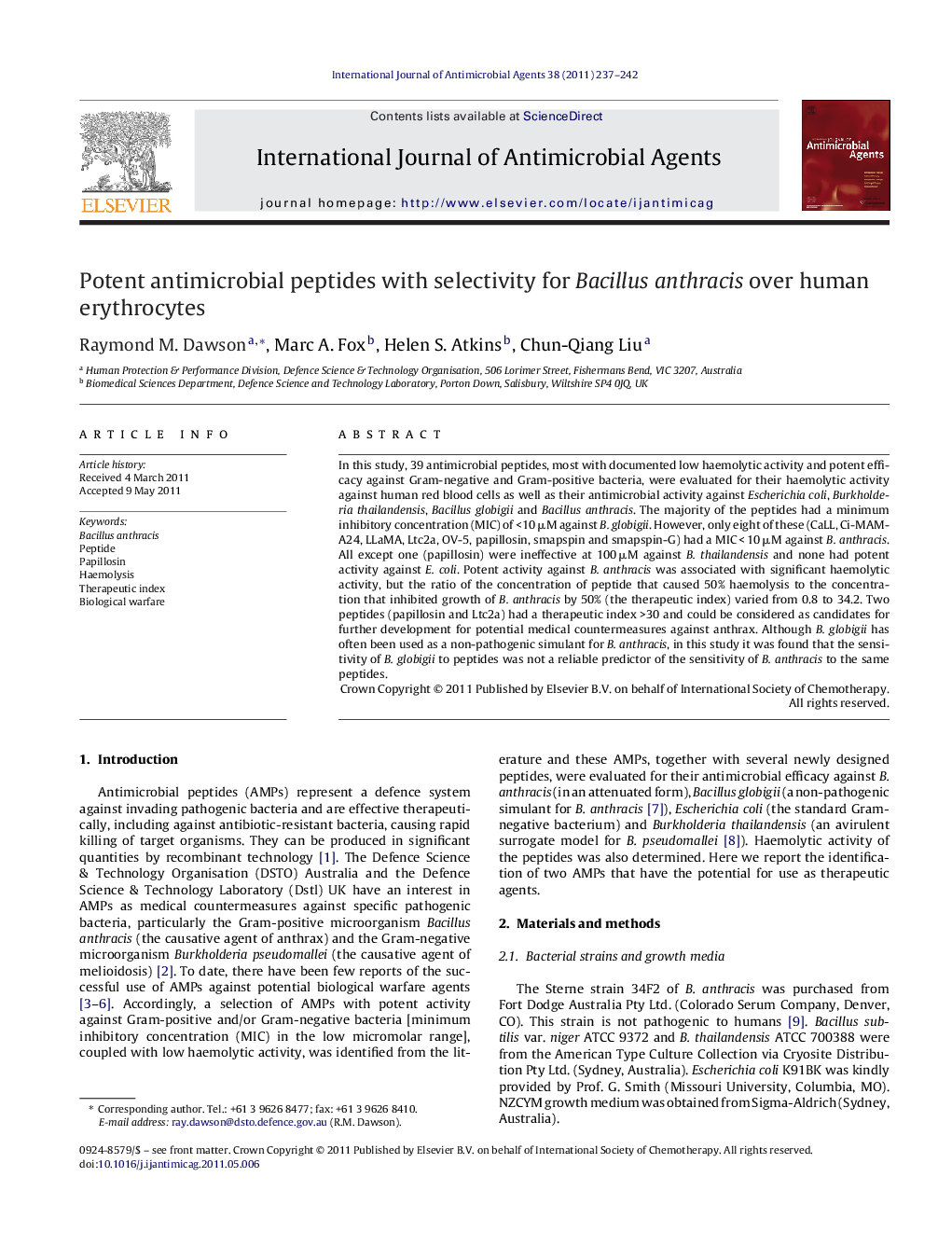| Article ID | Journal | Published Year | Pages | File Type |
|---|---|---|---|---|
| 3359463 | International Journal of Antimicrobial Agents | 2011 | 6 Pages |
In this study, 39 antimicrobial peptides, most with documented low haemolytic activity and potent efficacy against Gram-negative and Gram-positive bacteria, were evaluated for their haemolytic activity against human red blood cells as well as their antimicrobial activity against Escherichia coli, Burkholderia thailandensis, Bacillus globigii and Bacillus anthracis. The majority of the peptides had a minimum inhibitory concentration (MIC) of <10 μM against B. globigii. However, only eight of these (CaLL, Ci-MAM-A24, LLaMA, Ltc2a, OV-5, papillosin, smapspin and smapspin-G) had a MIC < 10 μM against B. anthracis. All except one (papillosin) were ineffective at 100 μM against B. thailandensis and none had potent activity against E. coli. Potent activity against B. anthracis was associated with significant haemolytic activity, but the ratio of the concentration of peptide that caused 50% haemolysis to the concentration that inhibited growth of B. anthracis by 50% (the therapeutic index) varied from 0.8 to 34.2. Two peptides (papillosin and Ltc2a) had a therapeutic index >30 and could be considered as candidates for further development for potential medical countermeasures against anthrax. Although B. globigii has often been used as a non-pathogenic simulant for B. anthracis, in this study it was found that the sensitivity of B. globigii to peptides was not a reliable predictor of the sensitivity of B. anthracis to the same peptides.
